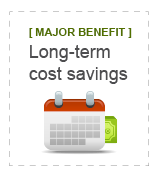Increase financial and environmental sustainability by enabling and encouraging walkable housing and retail land use.
Best Practice
Best Practice Actions
a. Neighborhood single-family density at 7 units/acre or greater wherever urban services are available.
b. Multi-family housing at a gross density of at least 15 units/acre adjacent to a commercial zoning district or transit node.
a. Incorporate a flexible lot size/frontage requirement for infill development.
b. Use density and floor area ratio (FAR) bonuses in selected residential zoning districts.
c. Clustered residential development; tie a regulatory standard to comprehensive plan language defining compact city expansion zones that limit low-density development.
d. Allowing accessory dwelling units, single-room occupancy housing, senior housing, co-housing or tiny houses / apartments by right in selected zoning districts.
e. Implement a vacation rental property registration policy and/or special tax.
a. Include in the city zoning ordinance and zoning map a commercial district with zero-lot-line setbacks and a FAR minimum of 1.
b. Set targets for the minimum number of employees/acre in different commercial zones.

